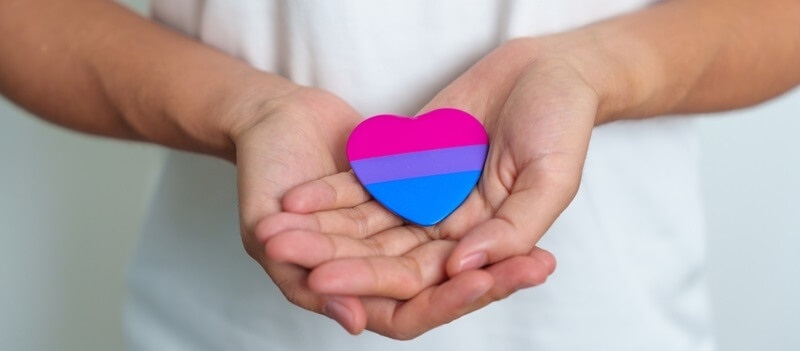A Comprehensive FAQ on Blood Donation for Gay Men

In recent years, there have been significant advancements in blood donation policies, particularly concerning the LGBTQ+ community. These changes aim to make the process more inclusive and accessible, allowing gay men and other members of the LGBTQ+ community to donate blood under revised guidelines.
This article provides an in-depth look at the inclusive changes, new FDA guidelines, health history screening processes, specifics on HIV preventative medications, and personal stories from newly eligible donors.
Inclusive Changes in Blood Donation Policies for Gay Men
The updated policies now allow more gay men to donate blood, a significant shift from previous restrictions. Historically, gay men faced stringent deferral periods and exclusions based on sexual orientation. However, the new guidelines focus on individual risk assessments rather than blanket restrictions, creating a more equitable approach.
Eligibility Requirements
New FDA Guidelines
The FDA has implemented new guidelines that mark a significant step towards inclusivity. The 2023 revisions eliminate questions based solely on sexual orientation, instead focusing on behaviors that may increase the risk of bloodborne infections. This change aligns with a broader move towards individual risk assessments, ensuring that the screening process is fair and scientifically grounded.
Detailed Health History Screening Process
The health history screening process is crucial for ensuring the safety of both donors and recipients. All potential donors must complete a comprehensive questionnaire that assesses their health history, travel history, medication use, and sexual behavior.
These questions are designed to identify behaviors that may pose a risk of transmitting infections through blood donation. For those seeking support and understanding during this process, consulting with gay therapists can provide valuable guidance and reassurance.
HIV Preventative Medications and Deferral Periods
Individuals taking HIV preventative medications, such as PrEP (pre-exposure prophylaxis) or PEP (post-exposure prophylaxis), are subject to specific deferral periods. Those who take oral PrEP must wait three months from their last dose before donating blood. For injectable PrEP, the deferral period extends to two years. These measures ensure that the medications do not interfere with the detection of HIV in donated blood.
Personal Experiences from Newly Eligible Donors
Many newly eligible donors have shared their stories, highlighting the personal and community impacts of these inclusive changes. For instance, Ralph Galvan expressed his joy at being able to contribute to saving lives through blood donation.
Rev. Rick Hoyt-McDaniels shared his experience of donating blood for the first time in 40 years, a moment he had eagerly awaited since the policy changes. Shannon Hardin, an openly gay man, spoke about his excitement at finally being able to participate in blood drives he had previously only promoted. These personal experiences underscore the importance of inclusive policies and reflect the broader societal shift towards acceptance and equality, encouraging others to seek out positive gay relationship advice and support.
Common FAQs
1. Are gay and bisexual men now eligible to donate blood?
Under the FDA's new guidelines, there are no eligibility criteria specifically for men who have sex with men. Any individual, regardless of gender or sexual orientation, who has had new or multiple sexual partners and anal sex in the past three months must wait three months from the last sexual contact to donate blood.
2. Can I donate blood if I was deferred under the previous MSM policy?
Yes, under the new guidelines, the MSM policy has been removed. If you were previously deferred, you might be eligible to donate after the three-month deferral period from your last MSM-related deferral, provided you meet all other donation criteria.
3. How is a new sexual partner defined?
A new sexual partner refers to someone you have had sex with for the first time or someone you had sex with previously, stopped, and then resumed having sex with in the last three months.
4. Why is there a focus on anal sex in the screening process?
Anal sex carries a higher risk of HIV transmission compared to other types of sex due to the potential for blood exchange. This risk remains even with safe sex practices, as condoms can fail more frequently during anal sex.
5. Why arent questions about condom use included in the screening?
Condom use is not included because condoms can fail, and people may not accurately recall their use. The FDAs approach relies on more reliable risk assessments.
6. Can transgender individuals donate blood?
Yes, transgender individuals can donate blood. They can identify with the gender they prefer during the donation process, and there are no specific criteria related to being transgender.
7. Can intersex individuals donate blood?
Yes, intersex individuals can donate blood and can identify with the gender they prefer at the time of donation. There are no specific criteria related to being intersex.
8. Are non-binary, gender non-conforming, or genderqueer individuals eligible to donate?
Yes, non-binary and gender non-conforming individuals can donate. The donor history questionnaire is gender-neutral, but certain eligibility criteria require selecting male or female.
9. Can people in polyamorous relationships donate blood?
People in polyamorous relationships can donate if they have not had anal sex with new or multiple partners in the past three months. Otherwise, they must wait three months from their last sexual contact.
10. Why cant people with undetectable HIV donate blood?
Even with an undetectable viral load, HIV can still be transmitted through blood transfusions due to the volume of blood involved.
11. Can individuals on PrEP or PEP donate blood?
Those taking PrEP or PEP must wait three months from the last oral dose and two years from the last injection to donate. These medications can affect HIV test results.
12. Why are there eligibility rules if blood is tested?
Testing is not 100% effective, especially in early infections. The three-month deferral ensures a safe period for detecting infections.
13. Why is the sexual behavior deferral three months?
The three-month period accounts for the window during which various infections might not be detectable, ensuring comprehensive safety beyond just HIV.
14. What steps should I take to prepare for donating blood?
Before donating, ensure you are well-hydrated, have eaten a healthy meal, and are feeling well. Bring a form of ID and any necessary medical information.
15. How often can I donate blood?
Generally, you can donate whole blood every 56 days. However, different types of donations, such as platelets or plasma, may have different intervals.
16. What is the process of blood donation like?
The donation process involves registration, a health history screening, a brief physical exam, the blood draw, and a short recovery period with refreshments.
17. Can I donate blood if I have a tattoo or piercing?
Yes, as long as the tattoo or piercing was done at a state-regulated facility with sterile needles and ink. Otherwise, a deferral period may apply.
18. What should I do if I feel unwell after donating blood?
If you feel faint, dizzy, or unwell after donating, sit or lie down and drink plenty of fluids. Seek medical attention if symptoms persist.
Ways to Participate
Inclusive blood donation practices have opened the door for many new donors, particularly within the LGBTQ+ community. Here are several ways to get involved in this lifesaving initiative, whether by donating blood, organizing a blood drive, or volunteering.
How to Donate Blood?
Donating blood is a straightforward process that can make a significant difference in the lives of those in need. Here's how you can get started:
- Eligibility Check: Before donating, ensure you meet the eligibility requirements. This includes completing a health history questionnaire and undergoing a brief physical examination.
- Schedule an Appointment: While walk-ins are often welcome, scheduling an appointment can help streamline your donation experience and reduce wait times.
- Prepare for Donation: On the day of your appointment, eat a healthy meal and stay hydrated. Bring a form of identification and a list of any medications you are taking.
- Donation Process: The actual donation takes about 10-15 minutes, during which a small amount of blood is drawn. Afterward, youll rest briefly and have some refreshments to help your body recover.
Organizing and Hosting a Blood Drive
Hosting a blood drive is a powerful way to bring your community together and help save lives. Here are the steps to successfully organize a blood drive:
- Choose a Location: Select a venue that is easily accessible and can accommodate the setup of donation stations. Schools, community centers, and workplaces are popular choices.
- Recruit Volunteers: Assemble a team of volunteers to help with logistics, promotion, and day-of operations.
- Promote the Event: Use social media, email, flyers, and community bulletin boards to spread the word about your blood drive. Encourage pre-registration to gauge attendance.
You may also like: Historic: Pope Approves Blessings For Same-Sex Couples
Conclusion
Inclusive blood donation policies are a testament to progress and equality, ensuring that more people, regardless of their sexual orientation, can contribute to saving lives. The updated guidelines have not only expanded donor eligibility but have also reinforced the importance of safety and scientific accuracy in the screening process. By donating blood, organizing drives, and volunteering, individuals can make a substantial impact on their communities.
Embracing these opportunities helps to ensure a steady and diverse blood supply, ultimately benefiting countless lives. As we move forward, it is crucial to continue supporting these inclusive practices and encouraging widespread participation in blood donation efforts.
This content was created by AI























